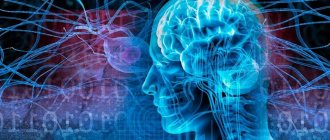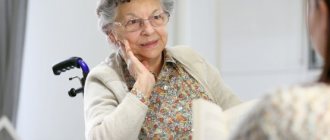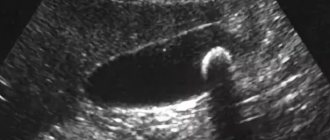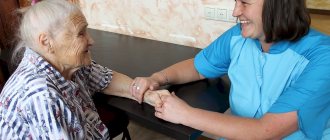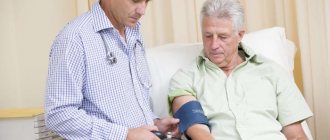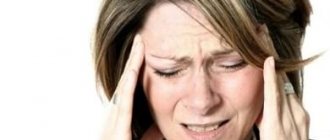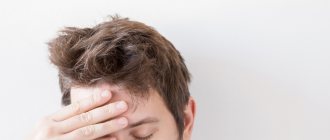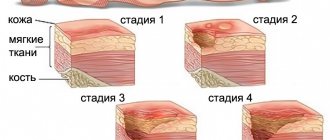28.06.2019
Stroke is an acute disorder of cerebral circulation due to blockage of blood vessels or their rupture. After a vascular accident, neurological symptoms develop within a few minutes or hours, which progress, sometimes leading to death. Recently, cases of stroke have become more frequent at young ages, up to 30 years.
Kinds
The main classification of strokes (according to ICD-10) takes into account the cause and mechanism of stroke.
- An ischemic stroke is characterized by a cessation of blood flow to the brain tissue. The reason is a violation of blood flow, blockage of an artery with a blood clot and/or narrowing by an atherosclerotic plaque (atherothrombotic), vasospasm, and a decrease in pressure. Most often develops at the age of 50-69 years. The incidence is 64-75% among all types of stroke.
- Hemorrhagic stroke is a hemorrhage into the substance of the brain or under the arachnoid membrane due to rupture of a vessel as a result of high blood pressure, atherosclerosis, vasculitis, aneurysms, coagulation disorders. Patients aged 50-69 years are at high risk. At 39-49 years old it is less common. The incidence is 15-20% among all types of stroke.
There are classifications that distinguish types of stroke taking into account other signs.
1. By severity:
- minor, including microstroke (transient ischemic attack) - a passing disturbance of cerebral circulation with complete disappearance of neurological symptoms within 1 day to 3 weeks;
- moderate severity;
- severe, extensive stroke of the brain - damage to a large area with pronounced neurological symptoms and severe condition, sometimes with falling into a deep coma.
2. By location
- left or right hemisphere. Each side is responsible for different functions, so the symptoms will be different. For example, if the left half is affected, the movements of the right side of the body suffer, speech and memory are impaired. The person loses the ability to read and write.
When the right hemisphere is damaged, the movement of the left side of the body, the perception of oneself, one’s body, and the surrounding space are impaired, and mental disorders develop.
3. By quantity
- primary stroke (first) and repeated strokes (second, third, fourth). Repeated strokes are more severe because the lesion area increases each time.
4. By age
- in children, starting from the prenatal period, young, elderly. The severity of clinical manifestations and prognosis depend on the patient’s age, the cause of concomitant pathology, and the timeliness of diagnosis. The most difficult prognosis is for delayed detection of a stroke, a large lesion, a weakened body due to concomitant diseases, bad habits, and vitamin deficiency.
5. By localization
:
- in the vertebrobasilar basin with damage to the occipital lobe of the brain, cerebellum and brainstem - visual disturbances develop, gait changes;
- frontal lobes - speech and swallowing suffer;
- temporal lobes - memory, writing, speech deteriorate;
- parietal lobe - speech and speech understanding suffer.
Possible consequences, complications
The main danger of a stroke is death. If a person survives, the disease will still make itself felt with certain complications.
Early consequences include:
- Brain swelling.
- Coma.
- Pneumonia.
- Paralysis. It can be partial or complete. Most often, one half of the body is affected.
- Repeated stroke.
- Bedsores.
- Mental disorders. They can manifest themselves in moodiness, irritability, aggression, and anxiety. Sometimes dementia develops.
- Sleep disorders.
- Myocardial infarction, gastric ulcer. These disorders develop against the background of increased levels of stress hormones.
After an ischemic stroke, death occurs in 15-25% of cases. Hemorrhagic damage to the blood vessels of the brain leads to the death of 50-60% of patients. The cause of death is precisely severe complications, for example, pneumonia or acute heart failure. The first 3 months after a stroke are considered the most dangerous.
Arms recover worse in patients than legs. A person's future health is determined by the severity of brain damage, the speed of medical care, his age and the presence of chronic diseases.
Long-term consequences include:
- Formation of blood clots in various parts of the body.
- Depression.
- Speech problems.
- Memory loss.
- Deterioration of intellectual abilities.
After a stroke, you have to deal with the consequences for many months. Sometimes a person never manages to fully recover. For rehabilitation to be as successful as possible, you must strictly follow all the doctor’s instructions.
Stroke is a serious pathology because it affects the brain. Therefore, even the slightest suspicion of a developing vascular accident is a reason to urgently seek medical help.
Development and risk groups
The development of a stroke is caused by a sharp increase in blood pressure, physical activity, and emotional stress. In such situations, a vessel ruptures followed by hemorrhage or spasm with ischemia. Predisposing factors are diabetes mellitus, high cholesterol, heart, vascular and blood diseases, and excess weight. In these diseases, blood vessels lose their elasticity and their walls stretch. People who or their close relatives have had a stroke or heart attack should be especially careful.
There are scales that determine the degree of risk of developing a stroke: the Framingham scale for assessing individual risk of developing stroke, the London School of Hygiene questionnaire on cardiovascular diseases by J. Rose.
By undergoing such testing, you can identify the degree of risk, undergo an examination and undergo a course of treatment in a timely manner before your health is affected.
Risk groups are identified:
- by age and gender - the likelihood of a stroke increases after 30 years. Ischemic stroke occurs more often in men aged 50-69 years. The incidence of hemorrhagic stroke up to 60 years of age is the same in men and women, then higher in women;
- in terms of lifestyle - unfavorable factors include inactivity, bad habits, stress, heavy physical labor. These factors worsen health and provoke chronic heart and vascular diseases.
Diagnostic methods
It is important to quickly distinguish a stroke from other diseases that can lead to the development of similar symptoms. It is almost impossible to do this on your own, as well as to determine the type of vascular accident.
The main difference between an ischemic stroke is a gradual increase in symptoms that do not lead to loss of consciousness. With hemorrhagic hemorrhage, the patient passes out quickly. However, stroke does not always have a classic course. The disease may begin and progress atypically.
Diagnosis begins with examination of the patient. The doctor collects anamnesis and determines the presence of chronic diseases. Most often, you can get information not from the victim himself, but from his relatives. The doctor performs an ECG, determines the heart rate, takes a blood test, and measures blood pressure.
It is possible to make the correct diagnosis and obtain maximum information about the patient’s condition thanks to instrumental diagnostic methods. The best option is a CT scan of the brain. Performing an MRI is difficult because the procedure takes a long time. It takes about an hour. It is impossible to spend this amount of time diagnosing an acute stroke.
Computed tomography allows you to clarify the type of pathology, where it is concentrated, to understand how badly the brain is damaged, whether the ventricles are affected, etc. The main problem is that it is not always possible to perform a CT scan in the shortest possible time. In this case, doctors have to focus on the symptoms of the disease.
To determine the source of the stroke, the method of diffusion-weighted tomography (DWI) is used. The information will be received within a few minutes.
Other examination methods include:
- Lumbar puncture.
- Cerebral angiography.
- Magnetic resonance angiography. It is performed without the introduction of a contrast agent.
- Doppler ultrasound.
Once the diagnosis is made, the doctor will immediately begin treatment.
First signs and symptoms
Before a stroke, drowsiness, headache, numbness of the limbs, fatigue, spots before the eyes, nausea, dizziness, temperature fluctuations, and blood pressure jumps appear. These are the harbingers or first signs of a stroke that appear several hours or days before the disaster. Most often, these symptoms are ignored, or they are attributed to fatigue and overwork.
Symptoms of a stroke themselves are divided into general cerebral and focal. They can be of varying degrees of severity depending on the prevalence of the pathological process.
- General cerebral symptoms: headache, impaired consciousness up to loss of consciousness, stupor, agitation or weakness, disorientation in space and time, sweating, feeling hot, convulsions. Makes you feel sleepy and sometimes chills.
- The focal abnormalities of a stroke depend on which area of the brain is affected. They can be unilateral or bilateral. This group includes disturbances in speech, vision (visual hallucinations), gait, movements up to paralysis, and sensitivity.
Symptoms of ischemic cerebral stroke develop gradually, with focal symptoms predominant.
With a hemorrhagic stroke, the onset is rapid, with a predominance of cerebral symptoms.
There are several stages in the development of a stroke: the acute period (from the moment of the stroke to 3 weeks on average), the recovery period - from 2 weeks to 24 months.
Diagnostic methods
It is important to quickly distinguish a stroke from other diseases that can lead to the development of similar symptoms. It is almost impossible to do this on your own, as well as to determine the type of vascular accident.
The main difference between an ischemic stroke is a gradual increase in symptoms that do not lead to loss of consciousness. With hemorrhagic hemorrhage, the patient passes out quickly. However, stroke does not always have a classic course. The disease may begin and progress atypically.
Diagnosis begins with examination of the patient. The doctor collects anamnesis and determines the presence of chronic diseases. Most often, you can get information not from the victim himself, but from his relatives. The doctor performs an ECG, determines the heart rate, takes a blood test, and measures blood pressure.
It is possible to make the correct diagnosis and obtain maximum information about the patient’s condition thanks to instrumental diagnostic methods. The best option is a CT scan of the brain. Performing an MRI is difficult because the procedure takes a long time. It takes about an hour. It is impossible to spend this amount of time diagnosing an acute stroke.
Computed tomography allows you to clarify the type of pathology, where it is concentrated, to understand how badly the brain is damaged, whether the ventricles are affected, etc. The main problem is that it is not always possible to perform a CT scan in the shortest possible time. In this case, doctors have to focus on the symptoms of the disease.
To determine the source of the stroke, the method of diffusion-weighted tomography (DWI) is used. The information will be received within a few minutes.
Other examination methods include:
- Lumbar puncture.
- Cerebral angiography.
- Magnetic resonance angiography. It is performed without the introduction of a contrast agent.
- Doppler ultrasound.
Once the diagnosis is made, the doctor will immediately begin treatment.
What to do if you have a stroke
There are techniques that allow you to identify signs of a stroke yourself. For example, they can be used if someone becomes ill on the street and you suspect a stroke. You need to ask the person to smile, speak, raise both hands. If the victim cannot comply with your request or there is asymmetry, you should immediately call for help and list all the symptoms.
At the same time, you need to provide first aid: lay the victim down, placing a small support under his head, and free him from clothes that are preventing him from breathing. He should not eat or drink or make sudden movements. When vomiting, turn your head to the side.
Further treatment is carried out in a hospital. First, diagnostics are carried out to clarify the diagnosis; computed tomography and magnetic resonance imaging, lumbar puncture and EEG (echoencephalography), angiography are prescribed. Then conservative (basic therapy, treatment of neurological complications) or surgical treatment is prescribed.
After the end of the acute period, rehabilitation is prescribed: massage, physical therapy and other activities, depending on the degree and type of disorder. The patient is observed by a neurologist, physiotherapist, speech therapist, and psychotherapist.
The brain has neuroplasticity: with the right approach, you can recover from a stroke, restore brain function and prevent stroke complications. The key factor is timely initiation of treatment, proper rehabilitation and regular exercise.
According to WHO, about 60% of patients do not require assistance by the end of the first year, and 30% of patients of working age can return to work.
Expert advice
I draw your attention to the fact that when providing first aid it is very important to recognize the pathology in time. The future life of the patient depends on the correct actions of the person nearby.
- During a heart attack, there is severe pain in the heart area. It can radiate from the left into the arm, under the shoulder blade, into the jaw and the entire half of the head, the stomach. Atypical forms manifest themselves in the form of rhythm disturbances (the pulse becomes frequent and uneven), severe abdominal discomfort or shortness of breath similar to an asthma attack.
- A stroke is accompanied by impaired consciousness, unsteadiness of gait, and severe pain in the head. If you ask the patient to raise his hand, most often he will not be able to do this. When you try to smile or stick out your tongue, you will notice a skew to one side. This symptom allows you to fairly accurately determine this acute condition. Speech disturbances, nausea and vomiting, and uneven dilation of the pupils are also typical for brain damage.
Prevention
- Primary prevention consists of proper nutrition, exercise, giving up bad habits and stress, adequate sleep and rest, and regular medical examinations.
- Secondary prevention of stroke includes the elimination of risk factors - treatment of concomitant pathologies, regular monitoring by the attending physician, elimination of risk factors. This approach will help not only prevent stroke, but also improve overall health. According to WHO estimates, the creation of an adequate system of care for patients with stroke will make it possible in the coming years to reduce mortality during the 1st month of the disease by 20% and ensure independence in everyday life 3 months after its onset in at least 70% of patients.
Case from practice
A patient was admitted to the hospital with complaints of weakness, severe chest pain and heaviness in the head.
At the same time, dizziness, shortness of breath, blue discoloration of the nasolabial triangle, high blood pressure, and increased pulse rate were noted. The ECG revealed signs of acute myocardial ischemia in the posterior basal parts of the heart. When taking an EEG, no abnormalities were found; there were no pathological symptoms from the nervous system. A blood test showed an increase in myoglobin, troponin, ALS and AST, and low-density cholesterol levels. Diagnosis: Acute macrofocal myocardial infarction. Hypertension II degree.
Treatment was carried out (oxygen therapy, intravenous nitrates in a dropper, Heparin, beta blockers, diuretics, sedatives). After 3 weeks of intensive therapy, the condition improved, the cardiogram showed positive dynamics, and scar formation was noted. He was discharged under the supervision of a cardiologist at his place of residence. Secondary prevention of the disease is recommended, constant intake of Aspirin, Nitroglycerin when pain occurs, Bisoprolol, Atorvastatin for life, a diet with limited fatty foods.
FAQ
How is a stroke different from a heart attack?
Cerebral infarction is one of the types of stroke and it is ischemic in nature, i.e. accompanied by a cessation of blood flow to the brain. A characteristic feature is the gradual development of the clinical picture and the predominance of focal symptoms: disturbances in speech, vision, gait, movements up to paralysis, sensitivity.
Can a stroke and heart attack happen at the same time?
If we consider only the brain, mixed stroke occurs, when the causes of stroke include both hemorrhage and ischemia. They can occur simultaneously when a vessel ruptures in one area and blood flow stops in another. Also, ischemia can develop at the site of subarachnoid hemorrhage after some time.
If we consider a heart attack as a heart disease, then these conditions can also be diagnosed simultaneously. Moreover, a stroke can develop as a result of a heart attack: the functioning of the heart suffers, and insufficient blood flows to the brain. This is how we get a stroke.
Does a stroke only occur in the brain?
Stroke (Latin insultus “swoop, attack, blow”) is an acute disruption of the blood supply to the brain due to ischemia (infarction) or hemorrhage. If ischemia occurs in other organs, it is also called a heart attack. For example, myocardial infarction, intestinal, kidney, etc. It is characterized by severe pain, dysfunction of the affected organ and other symptoms.
Does stroke occur with normal or low blood pressure?
Arterial hypertension is one of the main, but not the only causes of stroke. Thrombosis, atherosclerosis, and diabetes mellitus, in which blood pressure is normal or even reduced, are also risk factors. In addition, with low pressure, the brain is not sufficiently supplied with oxygen, which is a prerequisite for the development of ischemic stroke.
Do children have strokes?
Stroke is also diagnosed in children. It can develop even in the perinatal period. Causes: abnormalities in the coagulation system, pathologies of the cardiovascular system, including vascular malformations, bad habits of the mother during pregnancy, oxygen starvation during childbirth, trauma.
In the perinatal period and up to one year, the disease is accompanied by anxiety, frequent crying, loss of appetite, impaired reflexes in the newborn period, strabismus, and convulsions. The diagnosis is made based on an examination by a pediatric neurologist, ultrasound of the brain, and tomography results. At older ages, symptoms are similar to those of stroke in adults.
The child's body is more flexible and responds more quickly to therapy. The main thing is to diagnose a stroke in time and begin treatment.
Can a stroke go away on its own?
There is such a condition - transient stroke. It is accompanied by a short-term circulatory disorder, but no irreversible changes in brain tissue occur. The external manifestations of such a stroke are the same as a normal one, but less pronounced: headache, dizziness, darkening of the eyes, changes in sensitivity in various parts of the body. And they pass within 24 hours. However, the condition requires qualified treatment and rehabilitation, elimination of risk factors, because in the future there is a possibility of a secondary stroke.
At what pressure can a stroke occur?
A stroke can develop at any pressure. Arterial hypertension causes hemorrhagic stroke, hypotension causes ischemic stroke.
Do pine cones help prevent stroke?
Pine cones lower blood pressure, so they should not be consumed if you have hypotension. The effect is due to the tannins contained in the buds. The composition also contains vitamins C and P - they strengthen the walls of blood vessels and improve blood circulation.
The advisability of using products based on herbal raw materials is decided by the attending physician after a detailed examination. In general, pine cones for stroke can only be used as a complementary method.
First aid
Both pathologies are extremely serious. If a pain attack behind the sternum of a squeezing or squeezing nature persists or increases, accompanied by weakness, cold sweat, severe shortness of breath, or if speech disturbances or impaired motor function occur, it is necessary to call an ambulance as quickly as possible. In this situation, delay is like death. The sooner specialized qualified care is started, the higher the survival rate.
The gold standard in the treatment of acute coronary pathology is emergency surgery aimed at restoring blood flow in the shortest possible time. Currently, all large hospitals are equipped with appropriate equipment.
To prevent a heart attack or stroke, you must adhere to several rules: do not smoke, walk 10,000 steps per day, adhere to a balanced diet, maintain a drinking regime (1–1.5 liters of clean still water per day), do not abuse alcohol, control your weight and, accordingly, , waist circumference (for men no more than 94 cm, for women no more than 80 cm), monitor blood pressure levels, check blood glucose and cholesterol levels. You are also required to undergo an annual medical examination. If you already have cardiac pathology, take prescribed medications regularly. If your health suddenly deteriorates, you should immediately call an ambulance.

